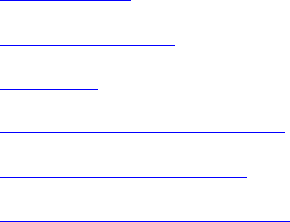Envoy Application Programming Manual
Table Of Contents
- What’s New in This Manual
- About This Manual
- 1 Application Programming With Envoy
- 7 ADM-2 Multipoint Supervisor Protocol
- 8 TINET Multipoint Supervisor Protocol
- 9 Burroughs Point-To-Point Protocol
- 10 Asynchronous Line Supervisor Protocol
- A ASCII Character Set
- B ASCII to EBCDIC Code Conversion
- C File-System Procedures
- D Statistics Messages
- E S-Series Changes to Envoy
- NonStop™ Himalaya S-Series Server Architecture
- G-Series Migration Considerations
- CBSENSEON and CFSENSEON Modifiers
- LEOTRESYN and NOLEOTRESYN Modifiers
- Treatment of Characters After the Termination Character
- Number of SYN Characters
- DTR Drop
- Reporting of Parity Error
- Half-Duplex Support for Asynchronous Lines
- Controller Replacement
- SYSGEN and COUP
- Unit Numbers
- FDX Line Changes
- No Support for Auto-Call Unit
- Glossary
- Index

BISYNC Multipoint Tributary Protocol
Envoy Application Programming Manual—427159-001
5-16
Message Formats
where ms is the message size in words (message length in bytes plus one, divided by
two).
The form of the MCW is:
MCW.<1> = READ type. The state of this bit indicates whether the READ that
completed was an initial READ (that is, station just selected) or a
continuation READ:
1 = initial READ
0 = continuation READ
The purpose of this bit is to allow the application process to detect
an aborted- transmission sequence by the supervisor station.
MCW.<8:15> = Entry number. This is a value that indicates an entry in the address
list. A specific entry in the address list, in words, is:
address list [entry number * address size]
For polling, upon completion of a READ where an active station was polled, Envoy
returns the entry number of the polled station.
For selection, upon completion of a READ where an active station was selected, Envoy
returns the entry number of the selected station.The message control word is not
transmitted over the communications line. The message control word is reflected in the
count read or written:
count read or written = 2 + message length
^
|
(message control word in bytes)
Messages must be formatted according to the BISYNC rules. Prior to transmitting a
message, the specific BISYNC control characters for a particular message type (such as,
heading, text, transparent text, and so on) must be placed in the message by the
application process. When a message is received, the control characters are returned in
the data to indicate the type of message received. Note that a message, as received in the
application’s buffer, does not contain Envoy-generated SYN characters, inserted DLE
characters (for transparent text), or block-check characters (BCCs).
The BISYNC multipoint tributary protocol accepts the following types of message
formats:
•
Normal Text on page 5-17
•
Transparent Text on page 5-17
•
Headings on page 5-17
•
Intermediate Text Blocking on page 5-17
•
Normal Text With ITBs on page 5-18
•
Transparent Text With ITBs on page 5-18










